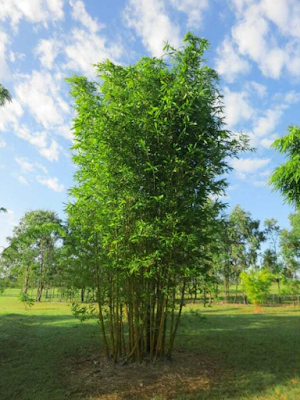Bamboo has finally grabbed the attention of the Western World and the future of this plant looks amazing. Despite this groundswell of interest in the plant, there are very few plantations in Australia and virtually none in Tasmania. The growers that do exist are quite stretched for supply as the demand grows for plants and our biosecurity regulations make it even more difficult to get plants into the state.
Tasmania is quite unique in many ways and growing Clumping Bamboo has it challenges. The temperate climate and lack of summer rainfall are the main obstacles but they don’t prevent us from successfully growing the plant. However, we are unable to produce the sizes achievable in the sub tropics and tropics, due to the short summers we experience. This makes it very difficult to predict yields and without an existing market, virtually impossible to predict returns and time frames. What I can state, is that the current mainland price for green (untreated poles) is circa $14/mtr in the size we can expect in Tasmania https://www.bambooaustralia.com.au/bamboo-poles-nursery-stakes-and-slats/ .
Before they become poles, the bamboo culms emerge as shoots and are an in demand product for the food industry https://www.agrifutures.com.au/farm-diversity/culinary-bamboo-shoots/ . Current mainland prices I have seen are around $40/kg.
Though not yet proven, we are hopeful of achieving 8 to 10 metres in height from Bambusa Oldhamii (proven cold climate all rounder) after 4yrs growth. Each plant should produce approx. 15 culms per year at that point with pole harvesting possible in year 5 (shoots earlier).
As a relatively small island adjacent to the Great Southern Ocean, Tasmania is subject to constant battering from wind. The fast-growing nature of Bamboo and its resilience to strong wind, along with its prolific biomass, makes it a particularly practical solution for farmers wishing to protect their crops/stock as well as domestic applications as relief. It is this market sector that is most interesting because it provides a multi-faceted, practical solution to wind.
The ecological benefits of Bamboo should be a driving force behind local government adopting Bamboo as viable planting options on nature strips and in parklands. When local production reaches the point where supply isn’t an issue, this will be a focal point of marketing.
Bamboo Van Diemen is determined to educate Tasmania and promote Bamboo as an important player in the sustainable future of the planet and seeks growers to see the opportunities ahead and get planting.
To conclude: There is no doubt in our minds that Bamboo has a massive future but it is at this stage very difficult to project returns on investment based on a domestic market that is currently non-existent. In many regards, growing Bamboo then, is a leap faith but as statistics become available – the future will become clearer. So apologies for being vague but the reality is we are trail blazing here in Tassie.




No comments:
Post a Comment